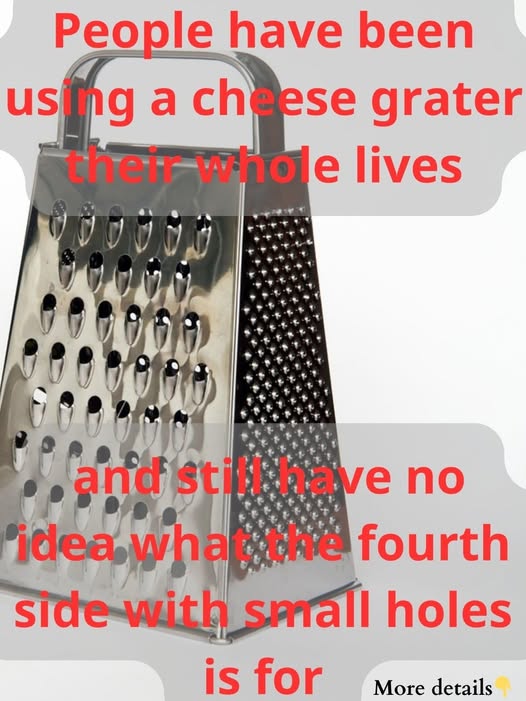an we just take a second to thank the humble cheese grater? It’s one of those kitchen tools that rarely gets the spotlight, yet it works hard for us week after week — whether it’s helping us shower gooey cheddar over tacos, prepping zucchini for bread, or turning chocolate into dessert magic.
But there’s a mystery many of us share. You’ve probably used the large holes, the medium holes, maybe even the slicer side… but then you flip it around and see it: that puzzling fourth panel, covered in tiny, sharp-edged bumps. And suddenly you’re wondering — is this broken? Is it just there to confuse me? Does anyone actually use this side?
Well, friend, today we’re solving the mystery once and for all. And spoiler alert: that fourth side may just be the most underrated one of them all.
A Quick Refresher on the Four Sides
Most box graters follow the same format:
Large Holes (Shredding) → Best for hard cheeses like cheddar, Gruyère, or mozzarella. Perfect for pizza, casseroles, and tacos.
Medium Holes (General Grating) → Your everyday side for softer cheeses, veggies like carrots or zucchini, and even chocolate.
Slicer Side (Single Blade) → Creates uniform slices of potatoes, cucumbers, apples, or cheese. Great for gratins and snack trays.
The Tiny-Holed Mystery Side → Ah yes, the side we’ve been ignoring.
What the Fourth Side Is Really For
That “mystery” side with its sharp, tiny raised holes is designed for ultra-fine grating. Think of it as your built-in zester or dust-maker for hard ingredients.
